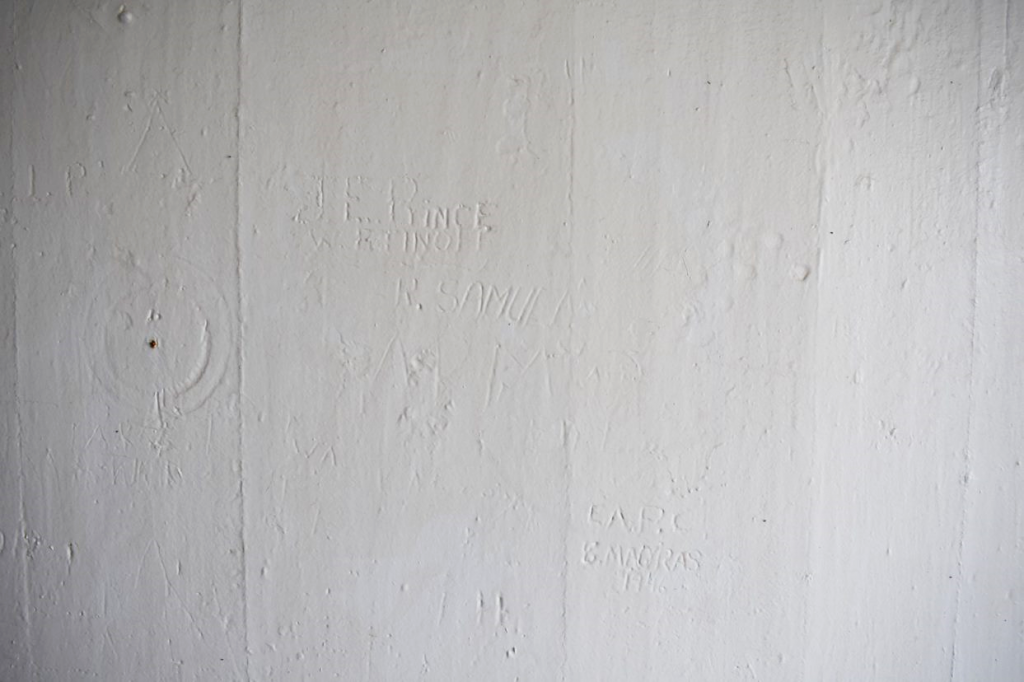UNESCO defines historical graffiti as any pre-20th century inscriptions or figure drawings carved into walls or pottery In addition to graffiti dating to the colonial era, Antigua as features graffiti related to the period of the Second World War (WWII). The field school recorded graffiti located within the breezeway and adjacent office of the former Naval Officer’s Quarters. During World War II, soldiers of the West India Regiment and Caribbean Regiment occupied Nelson’s Dockyard, where they carved their initials and dates into walls. Since then, the breezeway has been painted over multiple times, making some graffiti illegible.

Field School participants recorded the details and locations of graffiti within the breezeway and adjacent office using two methods. The first employed LiDAR (Light Detection and Ranging) via the Scaniverse iPhone app. This proved ineffective, likely due to the glossy white paint on the walls preventing the app from clearly scanning the graffiti. The team then opted to photograph each instance of graffiti with a Nikon DSLR camera, implementing a scale to indicate their sizes. The team photographer started with taking pictures at eye level, then used a ladder to capture graffiti higher on the walls, and finally photographing the lower levels in the unlikely case of lower engravings. The photographer used a two-step pace count, allowing the pictures to overlap.

The Dockyard is considering replacing the walls due to termite damage and the wood’s age, which involves destroying all the graffiti. The photographs taken will be used to preserve and interpret the engraved graffiti after the proposed renovation takes place. The historical context will be preserved by having the team document the graffiti and cross-reference the names and dates of the graffiti individual through archival research. One set of graffiti has already been attributed to a specific individual and date: R.K. Arbuthnot, 1889 (Figure 2). This particular inscription was framed, potentially to memorialize the junior naval lieutenant after he lost his life in 1916 during the Battle of Jutland (Gordon 1996:445). Alternatively, the engraving may have marked the date Arbuthnot officially ascended to baronetcy on 5 June 1889 (Bonnett 1968:114). Additional research to identify other names and associations with the regiment are underway.